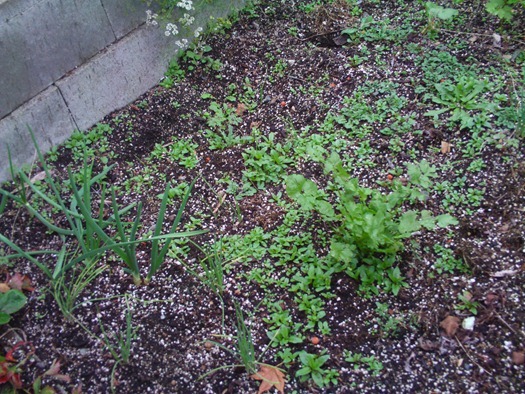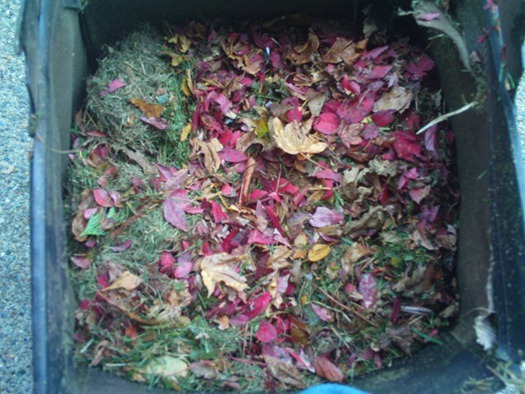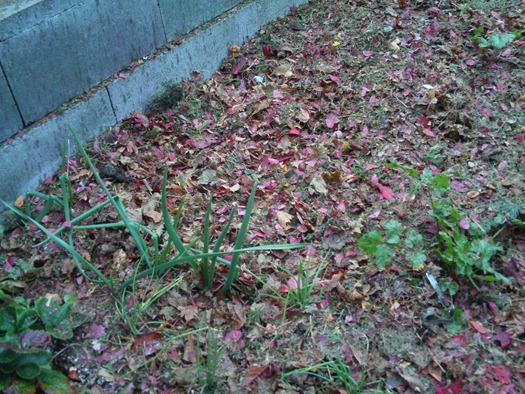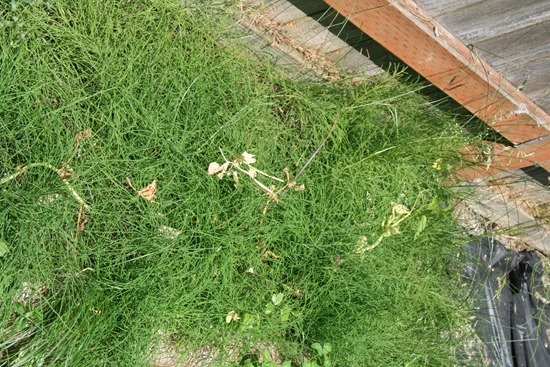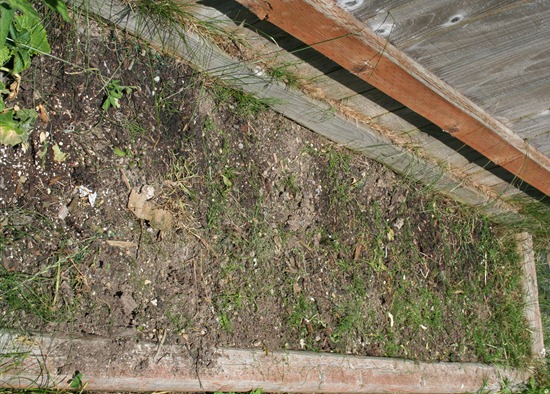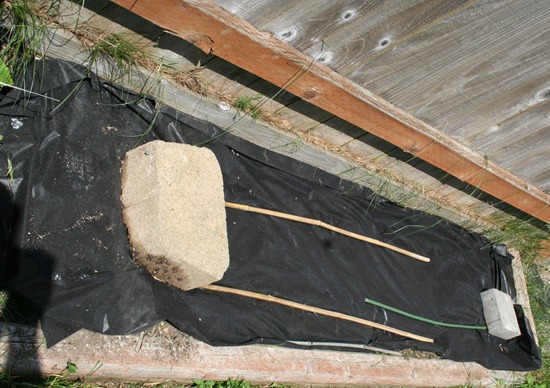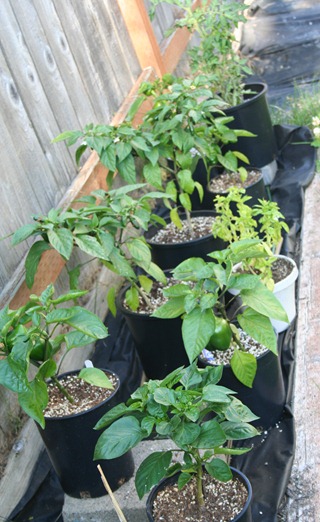Controlling weeds using a flamethrower
11 years ago flaming, weed flaming, weed prevention, weeds

Ok maybe a flamethrower is a bit of an exaggeration but just got done weeding my small yard in about 20 minutes and never had so much fun. The product I used was the Red Dragon (Weed Dragon 100,000 BTU) Vapor Torch which I picked up at Amazon for $50 with free shipping. Not only is this 2000 degree Fahrenheit blast to use it also is a much better alternative to using chemical herbicides which can make their way into our fishes and our very own drinking water.
The torch simply attaches to the same propane tank I use for my BBQ and you can control the intensity of the heat with a simple valve at the end of the handle.
This torch definitely exceeded my expectations, when I bought this I was really expecting maximum flame like seen below but this is about as low as it goes.

As you can see from the video below this baby pushes out quite a bit of heat when you turn it up and also kills the weeds by exposing them to the extreme heat causing the cells to explode, eliminating its stores of water thus causing a quick death which should be apparent in a couple hours. Now personally I found more pleasure burning them to a crisp with an evil laugh (kept in my head to not freak out the neighbors) but if you have a larger area to cover just a fraction of a second exposure should be enough to eliminate the weeds and possibly having to come back for a second application.
Flaming weeds in general is most effective when weeds are not quite established (1-2) inches, more established weeds may take a few more applications to finish them off. Personally I pull established weeds by hand so using them in the remaining small and tedious weeds seems a like a great option.
Flaming weeds is also less effective on weeds that have a considerable amount of water stores underground for my yard this would be my annoying horsetail and grasses which are much more effective in killing using weed smothering methods. Though I still get some pleasure hitting them with the torch while I killing other weeds.
Now the manufacture has also come up with some pretty awesome uses for this torch other them simply taking care of your of your weed problem which the detail below:
The Weed Dragon is not just for weeding – hundreds of other uses year round: FLAME weeds in your yard, garden, concrete cracks, rock gardens, driveways and along fence lines. Perfect along chainlink fences. Flaming reduces or eliminates spraying chemicals and is a lot more fun than pulling weeds. BURN heavy weeds and brush, stumps, debris and more. Perfect to burn off irrigation ditches, fields, culverts, pond edges etc. Start charcoal, campfires, burn barrels and back fires. THAW frozen water pipes. MELT snow and ice off steps, sidewalks, driveways and any nonflammable surfaces. HEAT metal castings, pipe and tubing, branding irons, pots, kettles, tar, asphalt and roofing materials. STERILIZE bird and animal cages, pens and other nonflammable confinement areas. REMOVE paint, grease, oil, plastic and other residues from metal, concrete and other nonflammable objects.
Using leaf mulch in your garden for weed prevention
13.5 years ago garden maintenance, leaves, mulch, weed prevention, weeds
Above is unfortunately what my vegetable garden looks like, still have some cilantro, bunching onions, bulb onions, garlic, broccoli, and spinach growing but obviously I have a blanket of tiny weeds emerging with large amount of rain we have been getting. This gives me a few options:
- A. Painfully pull every weed from the garden bed…repeat
- B. Give up on my plants and just lay down some black plastic or cardboard to smother the weeds
- C. None of the above
I am going to opt for “C” on this one and go with an alternate method of applying a mulch that I am sure many of you have an abundance of at the moment…leaves.
Now you don’t want to gather your leaves and dump them on your garden bed, you need to shred the leaves. There are a couple of reasons for doing this. First it reduces surface area which allows for faster composting when you eventually work this layer into your soil next spring but also reduces the drag on the leaves to keep most of the leaves actually in your garden bed. Second this will restrict weeds from emerging, but allows leaves from emerging garlic and onions to make their way through.
Now you know why you want to shred them, now this is how you do it. Spread out your leaves on your lawn and use your lawnmower (with bagger attachment) and run over them with half of the width of your mower at a time. Now you should a nice bag of shredded leaves. You want to keep grass clippings to this mix at a minimum but a small percentage will not hurt anything.
Now take handfuls of your freshly shredded leaves and spread as a 1/3 – 3/4 inch layer over your vegetable garden. You can help out some of your less established plants by brushing off any leaves directly on top of the plants. Finish by giving the leaves a nice watering to help with the matting down process to keep the leaves in your bed and not blown all around your vegetable bed by the wind. It was raining while I was mowing my leaves and applying them so I skipped this particular step.
Using this technique you should be able to start you gardening next spring with minimal weeding, some great partially composted organic matter to work into your garden, and as an added bonus some protective mulch for your winter veggies all with materials most of use send off in our yard waste bins.
Serious weed control
13.8 years ago peppers, weed prevention, weeds
I have been having a losing battle with cattails for the past couple years. This was what was lurking under my snow peas after I pulled them out. The problem with cattails is they do not emerge until the temperatures increase and given their broad root structure trying to remove them will most likely kill the plants (in this case peas) surrounding them.
If you attempt to pull cattails not only will you not kill them but this disturbance will actually encourage more growth. There are a couple of techniques to stop these evils weeds, first is instead of pulling them cut them at the base, second it to shade them. I decided to attack these weeds using both techniques.
Step 1: Chop weeds to their base. I used some scissors to cut down all of the cattails at their base.
Step 2: Covered the weeds. I used black plastic to smother the weeds. Not only will this smother the weeds but also bake the soil to kill any bacteria/fungus (or any other weed seeds) to hopefully end up with a moderately sterile soil when I plant next year.
Not to waste any of my very limited space in my garden, I moved my peppers and one tomato plants to this location.
Tags: pepper
How to prevent weeds in your garden
14.5 years ago organic, weed prevention, weeds
I doubt there is anyone who enjoys pulling weeds, though now at the end of the season is a great time to do some preventive measures to prevent new growth next season.
Kill your weeds early: The sooner you pull your weeds the easier it is to keep up with them. In addition, if you pick the weeds before the mature and flower and drop seeds you will save a ton of time pulling weeds for every one of those seeds that drop. Call me old fashioned but I normally skip the whole herbicide method and just pull the weeds by hand. Not only does your lawn or garden immediately look better, there is no coming back to see if the weeds need another dose of spray and the whole environmental part of keeping some chemicals out of our water system.
Mulch: This is one I didn’t completely understand until I had been gardening for a while. I for one never have found “beauty bark” beautiful and have always preferred the more natural look and benefits of fertile soil. But that is entirely why you want to use a mulch such as ground bark, straw, pine needles, leaves, newspaper, rubber bark, or even some old carpet. This helps prevent weeds in twp ways. First, it blocks light from the potential little weed seedlings to make their way to the surface. Second, they are not fertile mediums to grow seeds, which is exactly what you are looking for for your large flower beds which like to create good crops of weeds. As a final benefit they help insulate and hold water down for the plants you want to thrive having great growth and eventually shading out those “poor” weed seedlings. just 3-4 inches during the fall and your back should be bending over much less next spring.
If you are thinking, “What about my vegetable garden? I want seeds to be able to grow in there next year.” For your vegetable garden I highly recommend chopped leaves and a vegetable garden mulch. If you happen to have a leaf blower/vacuum that will chop them up all you need to do is empty those bags in a thin 1-2 inch layer across your garden. I used to have one of these though accidentally sucked up a rock which didn’t “chop” well and broke it so the alternate method I use is the following. Bag your leaves throughout the fall and once the leaves stop falling dump them out in a long row in your yard. Then use you lawnmower with bagger attachment and run them over until they are all chopped up. You can also do this more frequently during the fall but I find this a good time to use all the gas in the lawnmower before the end of winter feeling more like I am doing something more meaning other than just letting the mower sit there until it burns off the remaining fuel. With these leaves on the surface you smother any weed seeds and also block out all light to the soil. When spring time comes you simply work in the decomposed leaves into the soil and your garden has a head start with some good organic matter.
Pre-emergent weed control: For some parts of your yard like your lawn mulching is not really an options so to protect against pesky weeds like one of my personally loathing weed, annual bluegrass. Which grows and seeds so close to the ground it is nearly impossible to pull the plants to prevent the spreading. Pre-emergent herbicides is the solution to this problem. Pre-emergent herbicides work by preventing weed seeds from germination by inhibiting cell division in their tiny root system. Given these plants are annuals a successful application can rid you yard of these weeds until they eventually blower over from a neighbors. Pre-emergent herbicides can be purchased as a chemical or the organic method is applying glutton corn meal which normally can be purchased from your local feed store. One thing to remember is that this also will prevent you normal grass seed from germinating as well so be sure to time your application after with with enough lead time to allow the pre-emergent from wearing off.
Grow a cover crop: Growing a cover crop has two major benefits to your garden. Various legumes, grasses, and buckwheat make good options for for cover crops to plants while you garden is empty. First it creates a natural shade from the sun making it hard (or impossible) for seedlings are the surface to survive under their great shadows. Second it provides organic mater as “green manure” to add nutrients to your soil. One recommendation is to make sure you do a little research on the plant you choose as a cover crop, if you accidentally wait too long to “harvest” your cover crop it could go to seed and you may have an entirely new weed problem on your hands.
Cook the soil: When all else fails apply some black plastic (thicker the better) covering to your planting beds and let them “cook” throughout the fall/winter. Like mulch this will prevent any light and most water from entering the areas covered. This will essentially cook the soil killing any weeds, seeds, fungi, or anything else living in that area. Though this is very effective in eliminating weeds and disease from your soil it also kills everything else including good bacteria that your friendly worms like to visit your garden, so you soil may take sometime to recover and return to becoming living soil. I would recommend this method as a last result when the previous methods have proven to be completely unsuccessful.
Just for some positive outlook, you can also think of weeds as green manure assuming you are adding these to your compost, so even out of control they still can decompose and help your garden…
Tags: compost, garden seeds, organic vegetables, outdoor plants, vegetables, worms

